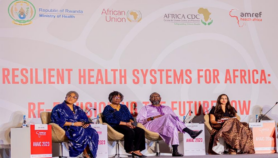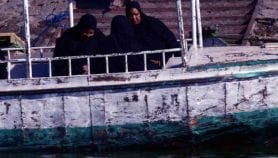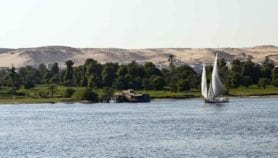By: Jorge Brenner
Send to a friend
The details you provide on this page will not be used to send unsolicited email, and will not be sold to a 3rd party. See privacy policy.
Sustainable governance in the Gulf of Mexico calls for joint action by Cuba, Mexico and the United States, argues Jorge Brenner.
Scientific collaboration on the common resources of the Gulf of Mexico has been difficult since the United States placed an economic embargo on Cuba in 1962. Research is permitted for US scientists who have a special government licence and Mexican scientists are allowed to travel to Cuba, but the political deadlock means that only a few institutions have managed to develop collaborative projects among the three countries. As a result, efforts to conserve the Gulf‘s valuable species and resources are being thwarted.
The economic embargo is widely considered as the main barrier to international marine research and conservation programmes in the Gulf. But, given that the Gulf is enclosed by three countries, an integrated view of governance of common resources should prevail over the political strategies of the individual countries.
This common responsibility is often overlooked. We have abused the region’s ecological resources in treating them as a source of wealth while failing to share responsibility for their conservation. In my opinion, this misunderstanding of the concept of the commons — owned by everyone and no one — has probably caused more damage than the economic embargo imposed on almost self-sufficient Cuba.
Rich in biodiversity and habitats
The Gulf of Mexico is rich in biodiversity and unique habitats, and hosts the only known nesting beach of Kemp’s Ridley, the world’s most endangered sea turtle.
The Gulf’s circulation pattern gives it biological and socioeconomic importance: water from the Caribbean enters from the south through the Yucatan Channel between Cuba and Mexico and, after warming in the basin, leaves through the northern Florida Strait between the United States and Cuba to form the Gulf Stream in the North Atlantic that helps to regulate the climate of western Europe.
About one-third of the Gulf is a broad continental shelf, which provides a wealth of fisheries. Intensive fishing is the biggest factor interfering with the Gulf’s environment, and is an area where the three governments should cooperate in managing this international resource.
In November 2007, some 30 Cuban and US marine scientists and resource managers met in Cancún, Mexico. The aim was to boost collaboration in marine research and conservation by developing a common agenda to pave the way for more sustainable utilisation of Gulf resources.
Participants developed a framework for joint research in the Gulf of Mexico and western Caribbean on coral reefs, sharks, sea turtles, dolphins, fisheries management, and marine-protected coastal areas. Although identifying these conservation targets is a solid outcome, progress on sustainable governance in the region will require more active involvement and efficient communication between scientists, stakeholders and government officials from the three countries.
Comparison of marine policies
We are progressing towards a scientific consensus in the Gulf, and we realise that overexploitation of its resources and pollution are causing the environment to deteriorate. But local governance issues, such as as ecosystem-based coastal zone management and Agenda 21 initiatives, are all important national responsibilities for achieving integrated conservation of the commons. Government officials, scientists and even the public in the region are aware of this; however, we still need a shared understanding of each other’s international policy, of the conservation opportunities and of the advantages of collaboration in management before we attempt to make changes at the local or country level.
Ensuring sustainability of the oceans is a challenge for regional governance, but it also offers opportunities. Researchers at the Harte Research Institute for Gulf of Mexico Studies in Corpus Christi, Texas, have compared the three countries’ marine policies with a view to finding common strategies for better governance in the region.
Even in the absence of a regional strategy, we could follow the example of the Maritime Policy of the European Union, which brought coastal and ocean policies of several countries to common ground. Recent changes in the Cuban and Mexican administrations promise re-establishment of at least a binational relationship, and the the next US administration could forge a more constructive alliance to improve the Gulf’s social-ecological dynamics.
A key outcome of the November meeting is the formation of working groups for each of the defined priority topics. This will enhance communication between scientists and officials in the three countries. Since 2003 the Harte Research Institute has conducted seven research projects in Cuba, with a total budget of US$365,500, and undertaken workshops and conservation activities on its northwest coast.
The next meeting will aim to develop a trinational marine conservation initiative for the Gulf by including Mexican scientists. This, in turn, should provide new strategies and opportunities for wider collaboration.
Jorge Brenner is postdoctoral research associate at the Harte Research Institute for Gulf of Mexico Studies, Texas A&M University-Corpus Christi.













